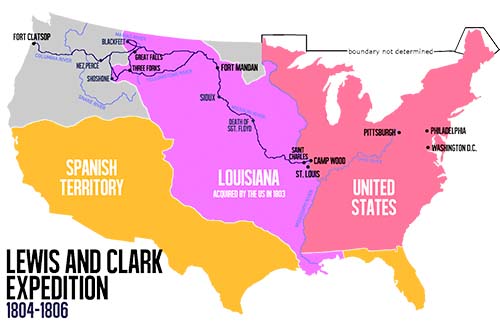
- Details
- By Rich Tupica
The Lewis and Clark National Historic Trail spans 4,900-miles, stretching from the Ohio River in Pittsburgh to the edge of Oregon. It crosses 16 states, as well as nearly two dozen Indian reservations.
A new three-year project, being conducted by The American Indian Alaska Native Tourism Association (AIANTA) and The National Park Service (NPS), aims to find and share the stories of the Native American Tribes that intersect with the Lewis and Clark National Historic Trail. The freshly gathered, cultural-heritage content will be showcased at both LewisAndClark.traveland NativeAmerica.travel.
Led by Meriwether Lewis and William Clark, the two-year Lewis & Clark Expedition commenced in 1803, after the completion of the Louisiana Purchase to help the U.S. Government map the uncharted west.
Along the way, the expedition team crossed paths with nearly 50 Native American tribes, all of which were integral in helping to chart the unknown territory.
According to a joint press release, AIANTA will conduct interviews with and make site visits to Tribes in Washington, Oregon, Idaho, Montana, North Dakota, South Dakota, Nebraska and Kansas. From there, the team will develop content and create regional itineraries that include Native and Tribally owned destinations and experiences along the route.
“We are excited to work with the National Park Service to help Tribes along the Lewis and Clark National Historic Trail share their stories,” said Sherry L. Rupert, Executive Director of AIANTA. “Native Americans are often left out of the historical narrative, so we are thrilled that NPS is looking to deliver a comprehensive inventory of tribal activities and cultural tourism experiences for visitors interested in traveling all or parts of the famed route.”
More than 215 years after Lewis and Clark and their Corps of Discovery commenced their two-year journey, this program expands on the groundwork, contributions and learnings from the Circle of Tribal Advisors of the Lewis and Clark Bicentennial Commemoration (2003-2006) and offers new opportunities for Tribes to share their stories to visitors from around the globe through cultural tourism.
More Stories Like This
Arizona Indian Festival Organizes Event for All Tribes at Scottsdale Western WeekHelp us defend tribal sovereignty.
At Native News Online, our mission is rooted in telling the stories that strengthen sovereignty and uplift Indigenous voices — not just at year’s end, but every single day.
Because of your generosity last year, we were able to keep our reporters on the ground in tribal communities, at national gatherings and in the halls of Congress — covering the issues that matter most to Indian Country: sovereignty, culture, education, health and economic opportunity.
That support sustained us through a tough year in 2025. Now, as we look to the year ahead, we need your help right now to ensure warrior journalism remains strong — reporting that defends tribal sovereignty, amplifies Native truth, and holds power accountable.
 The stakes couldn't be higher. Your support keeps Native voices heard, Native stories told and Native sovereignty defended.
The stakes couldn't be higher. Your support keeps Native voices heard, Native stories told and Native sovereignty defended.
Stand with Warrior Journalism today.
Levi Rickert (Potawatomi), Editor & Publisher
